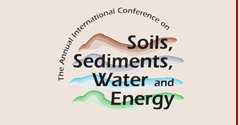Abstract
During the course of site environmental investigations where arsenic is one of the principal contaminants, it often becomes necessary to determine arsenic background in soil in order to define the extent of the arsenic contamination from the site and, in some cases, to help establish an appropriate cleanup level. Arsenic background in soil often has two components, one being “natural” background, related to local geology, and the other being “anthropogenic” background from human activities not associated with the site. For sites located in mostly pristine areas, it is likely that only natural background is involved, which in the eastern half of the United States is fairly consistent over a very limited range of arsenic concentrations. For these sites, arsenic background in soil can be established fairly easily through use of existing regional data or from a limited sampling of soil in areas unaffected by the site. However, for sites where the arsenic contamination is extensive over a large off-site area and anthropogenic sources other than the site itself are suspected to have contributed to arsenic levels in soil within that area, the determination of arsenic background applicable to the site becomes more complex. This paper discusses some of the challenges presented in estimating arsenic background for sites where different degrees of non-site related anthropogenic activity are involved, and presents a case study of how arsenic background in soil was established at one such site.
Recommended Citation
Mortefolio, Matthew J.
(2010)
"Derivation Of Site-Specific Arsenic Background In Soil: A Case Study,"
Proceedings of the Annual International Conference on Soils, Sediments, Water and Energy: Vol. 12, Article 6.
Available at:
https://scholarworks.umass.edu/soilsproceedings/vol12/iss1/6
